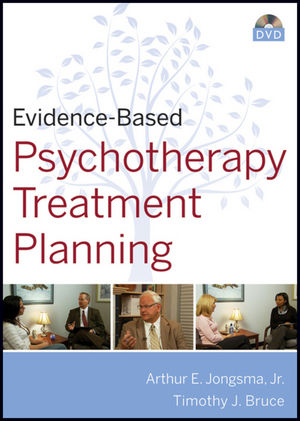|
Video
Evidence-Based Psychotherapy Treatment Planning DVDISBN: 978-0-470-41505-4
*Video
April 2010
 |
||||||
Purpose of the Series.
Empirically Informed Treatment.
II. History of Empirically Supported Treatment (EST) Movement.
Great Britain.
APA Division 12.
III. Levels of Evidence Criteria.
Well Established.
Probably Efficacious.
EST's Identified.
SAMHSA, NICE, and Others.
EST and Evidence based Practice.
IV. Advantages of Using EST's and EBP.
For the Client.
For the Clinician.
For the Agency.
For the Profession.
For National Policy.
V. Limitations of the EST Approach.
Efficacy, Effectiveness, and Utility.
Process and Content of Therapy.
Relationship, Therapist, and Client Factors.
VI. Six Essential Elements of Treatment Planning.
Identify the Primary and Secondary Problems.
Describe the Problem's Behavioral Manifestation (often using DSM Criteria).
Arrive at a Diagnosis.
Define and Select Long Term Goals.
Define and Create Short Term Objectives.
Define and Create Therapeutic Interventions.
VII. How Do We Apply Research Evidence to Treatment Planning?
Informing Goals, Objectives, and Interventions.
Therapeutic Relationship Factors.
Tailoring the Treatment Plan to the Individual Client.
VIII. Summary and Closing.



